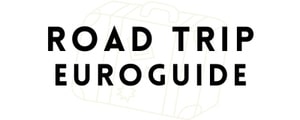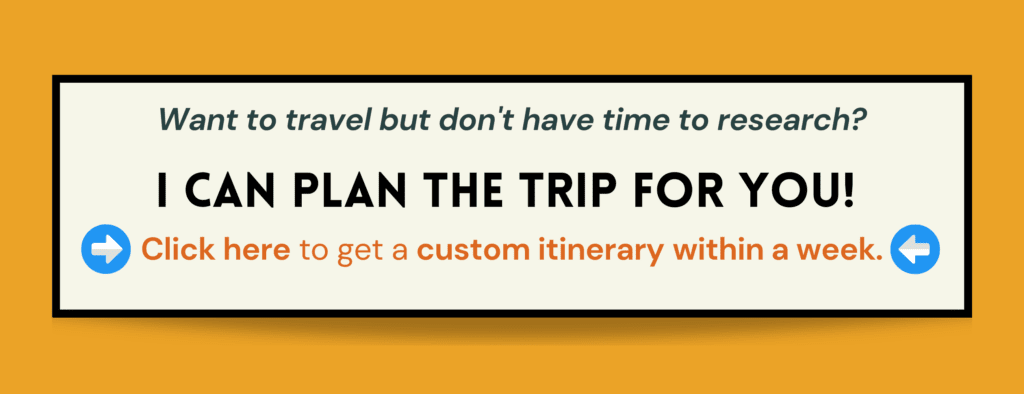Why Visit Romania (+ Travel Tips From a Romanian!)
Some of the links may be affiliate links, and at no cost to you, I earn a small commission if you make a purchase. I only recommend stuff I love and use, and the income goes back into making this little blog successful!
Firstly, to answer the question, “Is Romania worth visiting?” The answer is absolutely YES.
I was born and raised in Romania, and I’ve traveled up and down this country for many years. In my opinion, Romania is one of the most underrated and undiscovered countries in Europe.
So why do so few people travel here? I think it’s because Romania is relatively unknown outside of Dracula, and I bet people wonder if it’s safe to travel to Romania (the answer is yes, it’s really safe).
The truth is, while Romania is a stunning little hidden gem, I think it’s also a bit tricky to navigate. It’s not yet set up for easy tourism like Western Europe, with food & history tours or easy routes to follow. And to add to the complexity, it’s a geographically HUGE country – so you really have to plan.
This is my complete guide of practical advice and travel tips to give you the inspiration you need to plan a Romania trip, especially if it’s your first time.
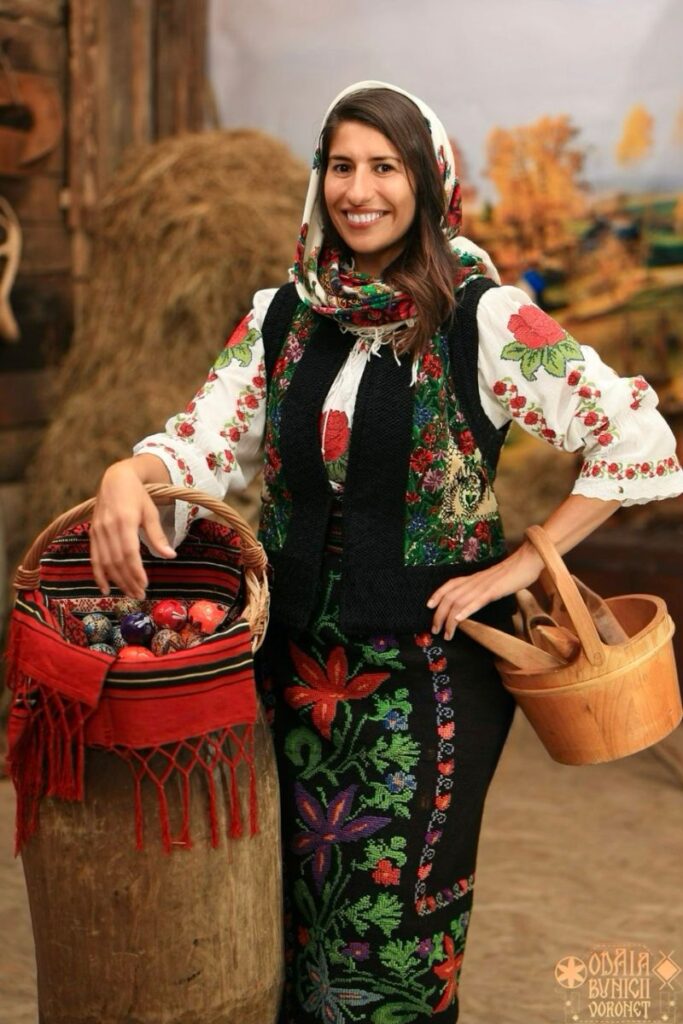
Is Romania Worth Visiting?
Yes, Romania is worth visiting, especially if you are the adventure seeker, the road tripper, the avid hiker, or the person who wants to experience a more authentic way of life than the highlight reel of a guided city tour.
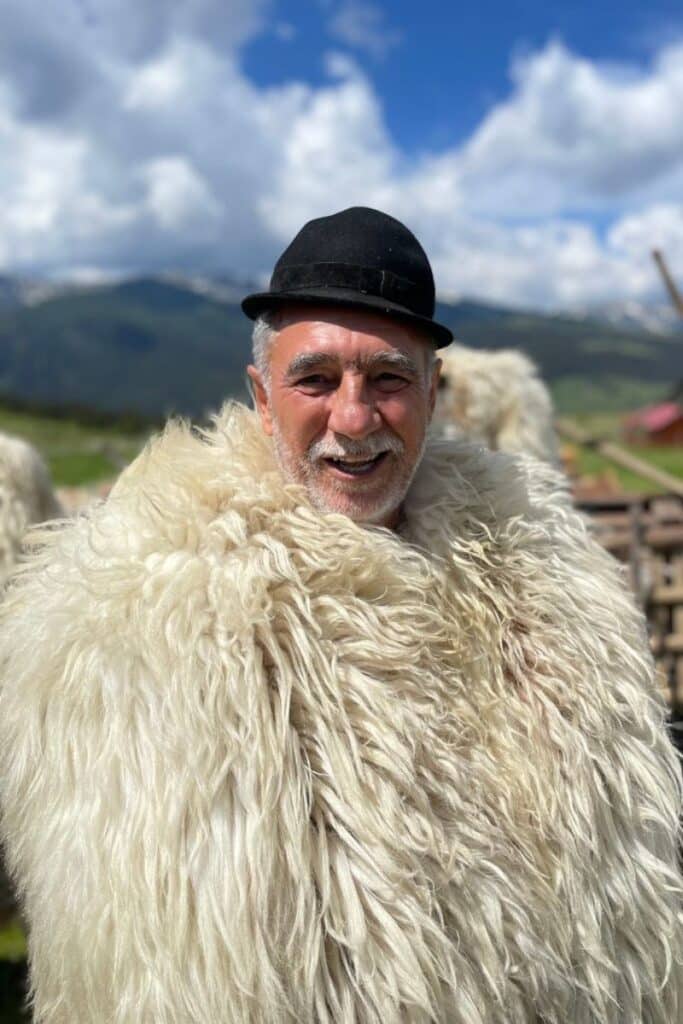
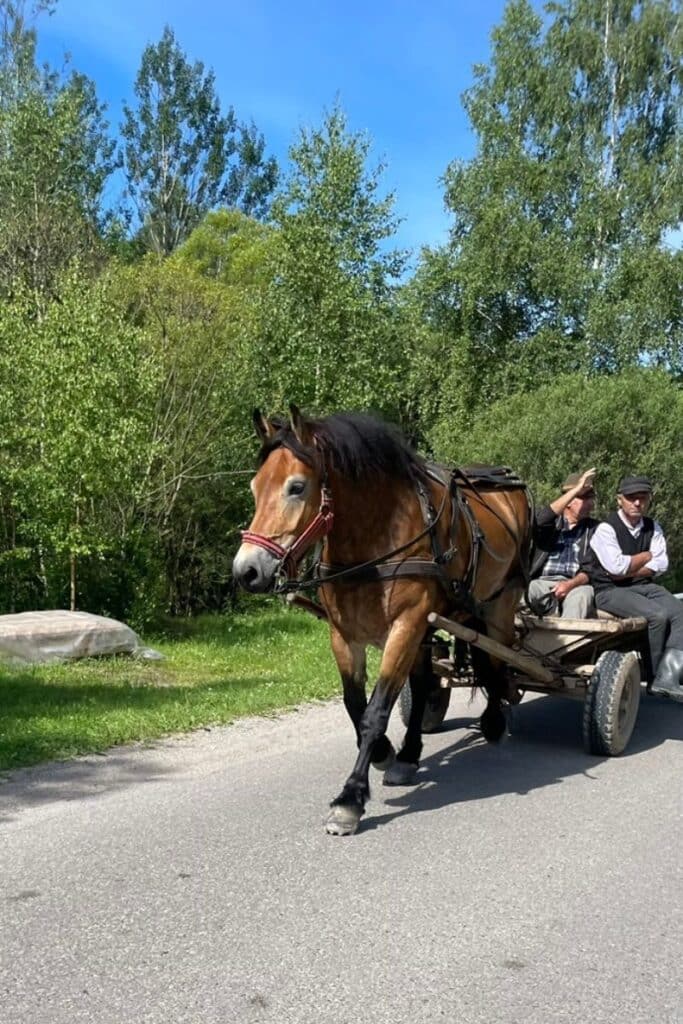
This summer, I spent two months road-tripping Romania to dive deep into the culture, food, and regions I never did as a kid. While it is NOT easy being a tourist in my own country, it is absolutely worth taking at least a week to explore.
BASIC KNOWLEDGE ABOUT ROMANIA (to get you started):
➡️ Capital: Bucharest
➡️ Currency: Romanian Lei (RON)
➡️ Population: ~20 million
➡️ Language: Romanian (English is widely spoken except in the small villages)
➡️ Safety: Romania is part of the EU and NATO and is safe to travel to
➡️ Vibe: Latin roots, Baltic vibe, East European traditional values due to Christian Orthodox religion being prominent in the country.
➡️ Best Way to Travel: Road Trip in Romania, 5-7 in a region.
➡️ Most Beautiful Regions: Bucovina, Maramureş, South-East Transylvania (where I am from)
➡️ Most Beautiful Cities: Brasov, Bucharest, Sibiu, Oradea – plus quite a few of the little unique towns like Sinaia and Rimetea, to name a few of my fave
➡️ Food & Drinks To Try: Mici (tiny sausages), Sarmale (cabbage rolls), all the soups, Papanaşi (dessert), Țuica (a clear fire whiskey), Ursus Beer (dark one is my favorite)
➡️ Gas Stations with Cleanest Bathrooms: PETROM and OMV.
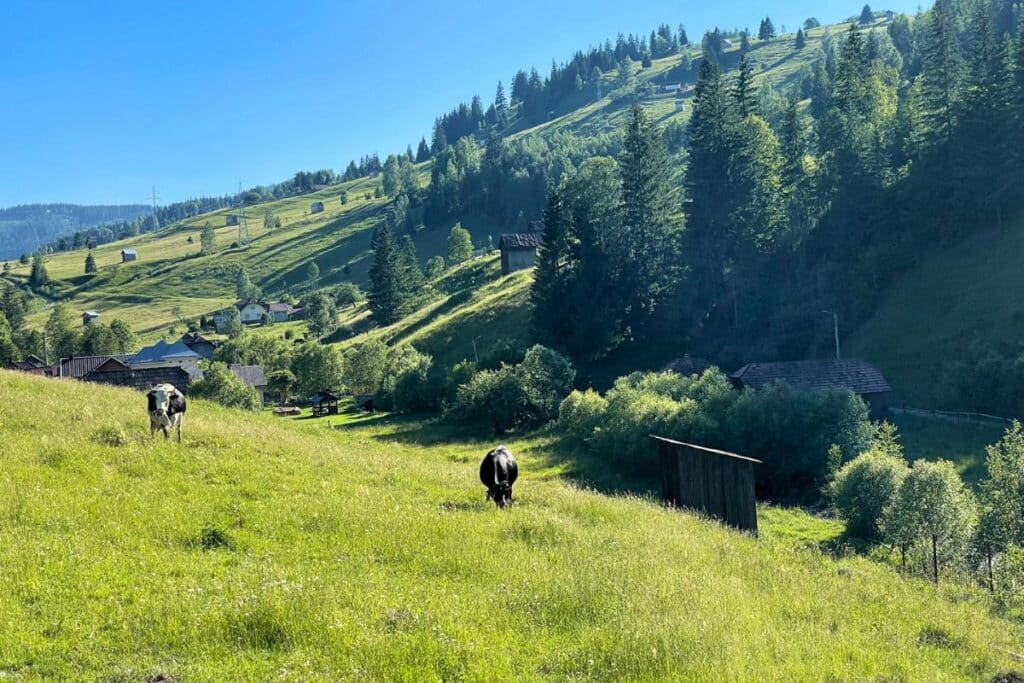
My Personal Reasons Why Romania Is Worth Visiting
✅ Romania is still a hidden gem, which is why it’s so magical. And because of this, you can still catch authentic old-school village life, see traditions that have been carried out for centuries (like making yogurt out of cow milk and horse-drawn carriages), and you can enjoy a country that is not busy with outside influence – but rather preserved.
✅ Tons of UNESCO World Heritage Sites and famous castles. This includes 500-year-old painted monasteries in Bucovina and Maramureş, the famous Corvin Castle, Bran Castle, where Dracula is supposed to come from (obvi a tourist trap, but still pretty), and my favorite Peleş Castle near my grandmother’s home.
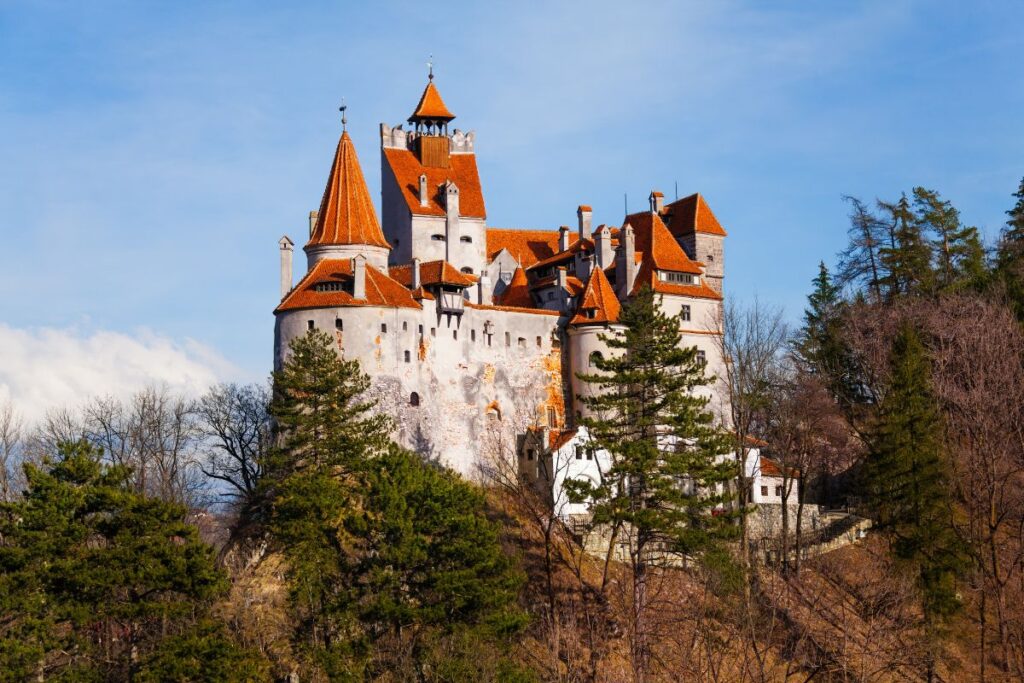
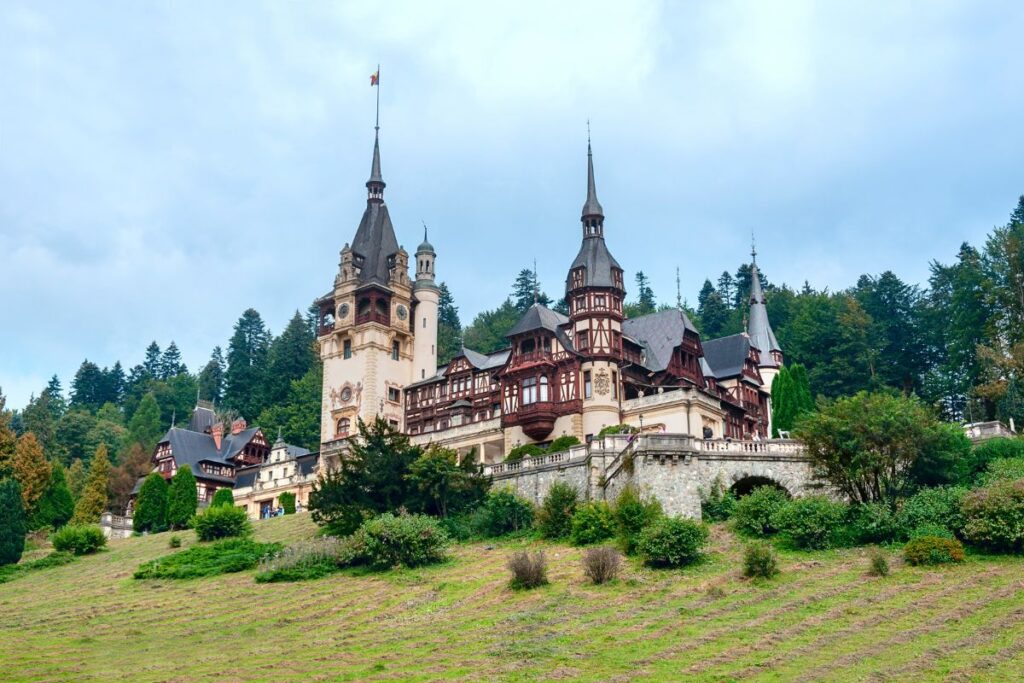
✅ Incredible hiking in the Carpathian Mountains. Some of the best hiking I’ve done has been in the Fagaraş Mountains, Rarau National Park, and Piatra Craiului (my fave). It’s a bit wilder, and the trails are not as well maintained. I recommend going with a guide!
✅ There are unique things to see in Romania, like the famous windy Transfǎgǎrǎşani Road, the immense Turda Salt Mine, the Decebalus Statue, and Dracula’s Bran Castle (vampires are fake, but the castle is a cute tourist trap).
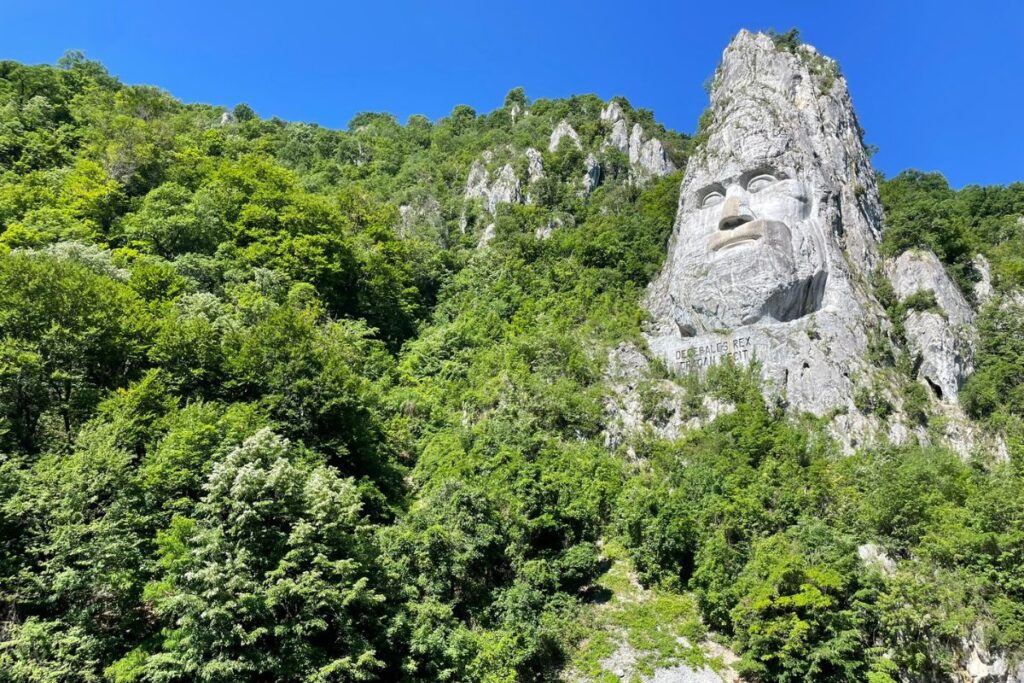
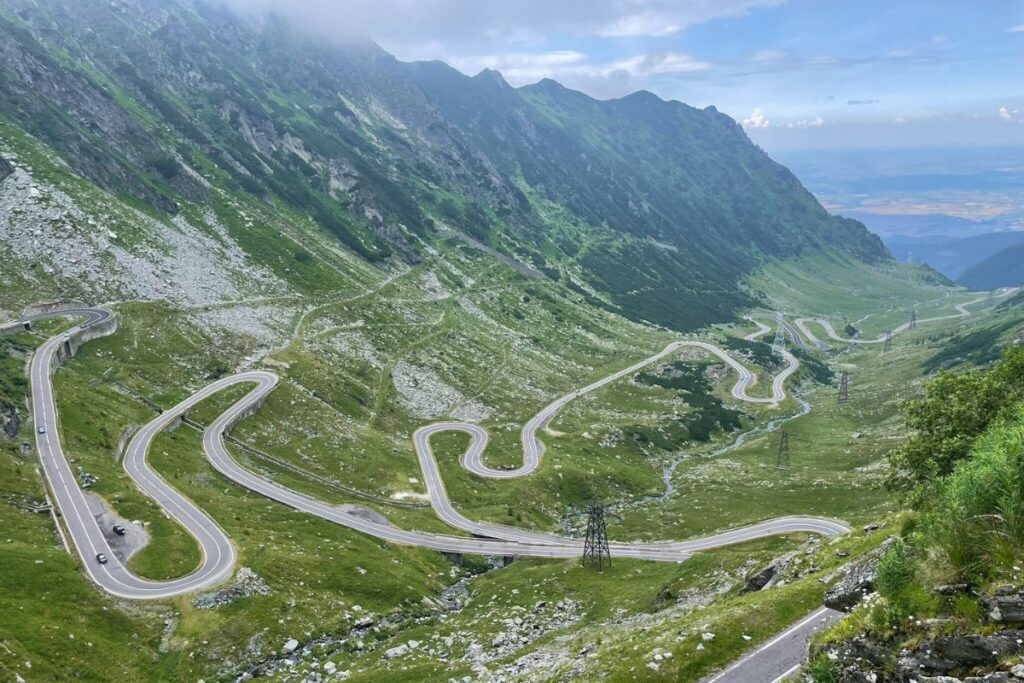
✅ The people are super kind and helpful. I think Romanians get a bad rap because they’re associated with thieves, gypsies, and a brutal Communist revolution where we assassinated our leader on live TV over Christmas 1989. But that’s all behind us now. When I visited, I spoke English, and everyone was very kind and helpful and went out of their way to help me. Because I also understand Romanian, I could tell everyone was genuine.
Entry Requirements & Visas
Romania is part of the EU, so entry into Romania is pretty relaxed.
Generally, when you travel from the United States, the UK, Australia, or any of the other EU countries, you just show up and are granted a free 90-day tourist visa.
You can check the Romanian Ministry of Foreign Affairs to see the requirements and what countries need a visa.
Is Romania Safe?
Yes, Romania is safe, especially for travelers. The country does not have a high crime rate, no crazy people with guns, not a lot of protests, and generally a pretty chill population.
The biggest thing you have to worry about, like in any country, is pickpockets. But as long as you are an alert traveler who uses common sense, you’ll be more than fine.
Romania does have gypsies. These are the Roma people, and they live in their own communities. You’ll see ladies with big flowing colorful dresses walking in the street or men in horsedrawn carriages – those are most likely gypsies.
The crappy thing is that gypsies sometimes use their children to beg tourists for money. My recommendation is NOT to give any money as it perpetuates a negative cycle and is not really helpful. My dad usually buys some food, like a giant pretzel, and gives it to the kids.
Travel Insurance & Medical Emergencies
✅ FAVORITE TRAVEL INSURANCE: There are a few good travel insurance companies out there, but my favorite is SafetyWing, and it’s the one I use.
I use SafetyWing for a few reasons. It’s straightforward, covers most of what you’ll need in Romania (even when hiking), and, depending on the policy, is one of the more affordable travel insurance options out there.
Their standard coverage costs about $56 for four weeks of travel in Romania for travelers aged 10-39. That’s the lowest price I know for decent travel insurance.
EMERGENCY NUMBER: The emergency number in Romania is 112, and an operator will ask if you want to talk to the police, fire, or medical services.
In Romania, there are tons of pharmacies everywhere, and you can get over-the-counter pain meds, cold & flu medicine, and anything related to common stomach issues quite easily and cheaply.
If you need medical attention, you can walk into a hospital or emergency room, and they’ll pretty much take care of you on the spot. You’ll be charged there, and then you can take it up with your travel insurance.
Travel medical insurance is not the sexiest thing to think about when planning an epic trip to Eastern Europe, but here we are – adulting. Insurance is important not just because of the financial side if something goes wrong but also because you’ll be glad to have someone to call and help you sort out hospitals and get prescription medicine abroad.
Romanian Money & Paying
While Romania is in the EU, it does NOT operate with the Euro. The official Romanian currency is the RON, but we call it Lei, and this is the cash that is king in Romania.
CASH PRO TIP: I always had about 500 RON cash on me for random taxis I took, farmers’ markets, artisan shops, etc. This is about €100.
The money is plastic, colorful, and comes in banknotes of 5, 10, 50, 100, 200. There are coins, but they don’t matter. From a currency exchange perspective, 1 Euro is about 5 RON. There are ATMs (bancomat) almost everywhere, and in every town, they are near the local bank or town hall.
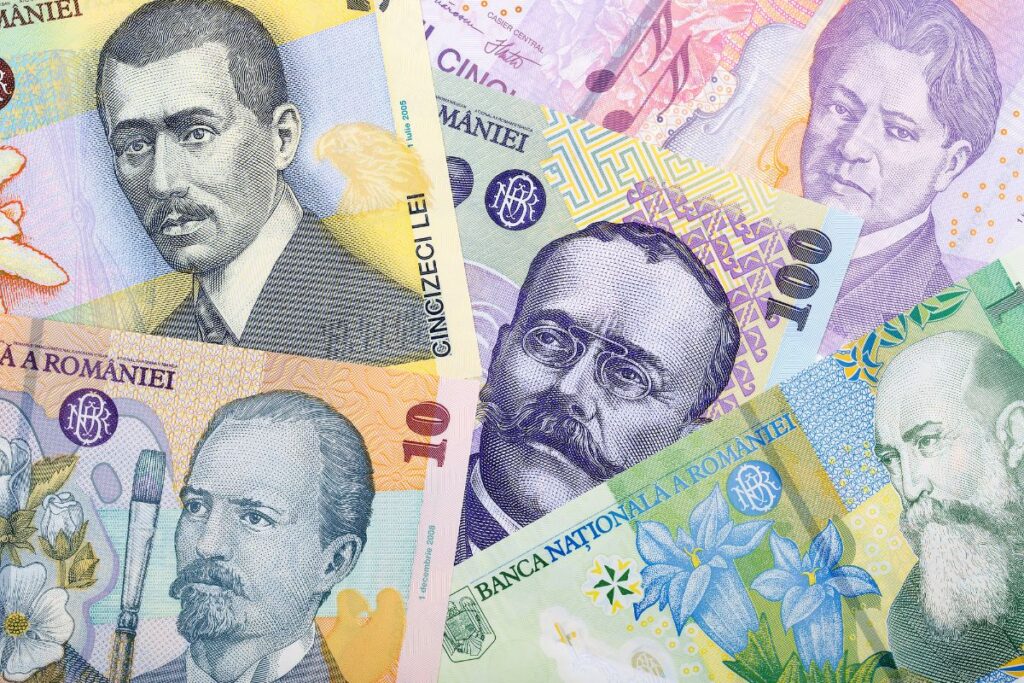
Paying with a credit card is super safe, easy, and accepted almost everywhere – shops, restaurants, hotels, etc. The few places where you need to have cash is to pay for a taxi or at farmers markets.
EXCHANGING MONEY TIP: I took out money with my debit card at an ATM in Romania, and it was the same rate as exchange houses (casǎ de schimb). That said, my dad told me that most exchange offices in the cities offer better rates than the banks and often don’t charge any exchange fees.
Budgeting For a Romania Trip
While Romania is cheaper to travel to than most other European countries, it’s not free, and prices have increased since Covid hit the tourism industry hard.
That said, there’s still a great “bang for your buck” for almost all tourist activities like booking tours, car rentals, wine tastings, and eating out.
For example, here was our budget for a road trip in Romania this past summer:
- Accommodation: €70-100 a night (we stayed in mid-range cute places, but you can also find budget rooms for €30)
- Tourist Attractions: €5-15 for entrance fees
- Car Rental: €20-40 a day depending on the season (keep in mind gasoline is in Liters and is a bit pricey.
- Daily Food: €30-50 per day per person
- Restaurant Meal: €30 (main meal is about €15-20, a soup is about €5, soda or beer is about €2, a coffee is about €2)
💰 TIPPING IN ROMANIA: Tipping is a thing in Romania, but it’s good enough just to round up the bill or to leave about 5-10% max for good service or big groups. This is best done with cash.
The prices for almost everything are 20-30% higher in high tourist areas like Bucharest, Brasov, Sibiu, and the Black Sea area, and 20-30% lower in smaller villages and towns.
Getting To Romania & Getting Around
Most of the time, you’ll land in Bucharest, the capital and the biggest airport in Romania.
Romania is quite large and, in my opinion, great for a road trip. Depending on how many days you have and where you’re looking to visit, I’ve included a few of the other big airports located in the different areas of Romania.
It may make sense to take a connecting flight to a more local airport and rent a car from there to explore that region a bit deeper.
- Henri Coandă International Airport (OTP): Romania’s busiest airport, located in Otopeni, a suburb of Bucharest, our capital. Location-wise, this is in the southeast of the country.
- Avram Iancu Cluj International Airport (CLJ): Romania’s second busiest airport, located in Cluj-Napoca in the middle of the country. I recommend landing here.
- Iași International Airport (IAS): One of Romania’s oldest airports, Iaşi International is located in the northeast of the country, close to the border with Moldova. It’s the third busiest airport in Romania.
- Timișoara Traian Vuia International Airport (TSR): This airport is Romania’s fourth-busiest and the main air transportation hub for western Romania.
- Oradea International Airport (OMR): Located in northwestern Romania, near the border crossing to Hungary.
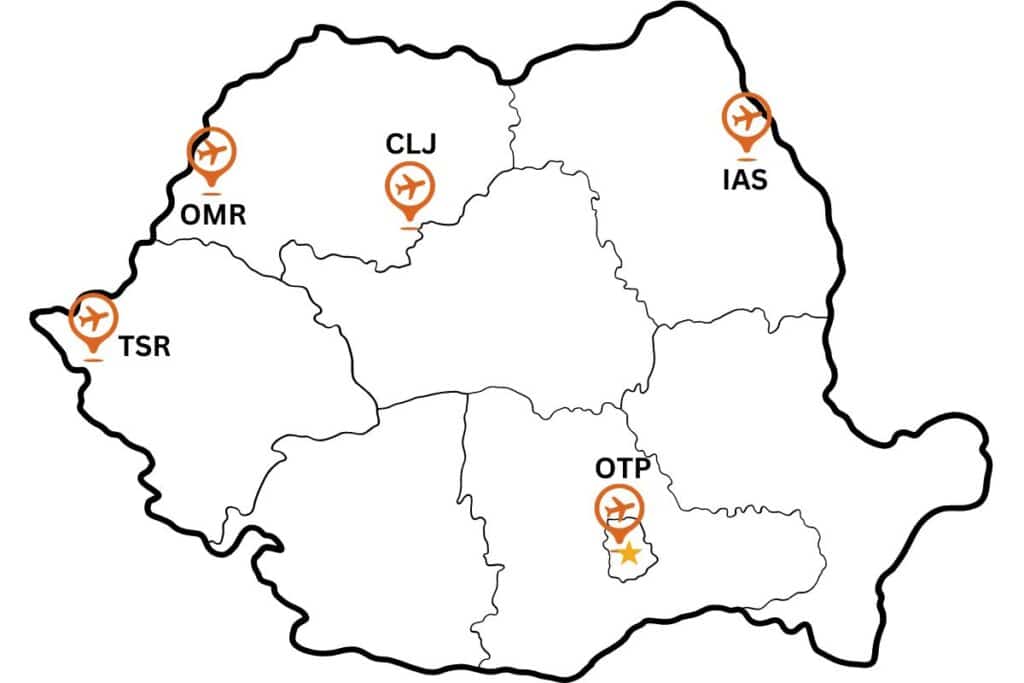
When it comes to trains and public transportation, it’s old school from back in the Communist era. Bottom line, public transportation is underdeveloped and kind of shitty.
On a positive note, we do have Uber, especially in big cities like Bucharest.
Driving in Romania
Driving in Romania is a bit more hectic and aggressive than anywhere in the US. It’s like driving in Italy after they’ve had too many espressos.
That said, the best way to explore Romania is to take one region at a time and road trip the heck out of it!
Renting a car for a road trip in Romania is pretty easy. You will need your driver’s license and an International Driver’s Permit when you pick up your car, as well as the credit card you used to book the reservation.
➡️ I personally rent and recommend Discover Cars for car rentals in Romania. ⬅️
You should know that Romania has a 0% tolerance to alcohol, and the police and most all Romanians take this seriously. My dad drove most of the time we road-tripped the country, and he didn’t drink until we were done driving.
When it comes to roads, here is the basic labeling system:
- DN – Drum Național (national road/highway)
- DJ – Drum Judatean (more local road)
- The smaller the number, the better the road (i.e. DN1 is a better road/highway than DJ574)
What I Observed When Driving in Romania
Here is a bit of my experience:
- Highways are pretty good and well-maintained, and there are no tolls.
- There are still dirt roads and plenty of potholes in some of the more rural villages; it is still Eastern Europe, after all.
- Romanian drivers will honk and flash their lights when they want to pass you, and I’ve seen some hairpin passing happen.
- There are random farm animals on some of the smaller roads.
- Traffic is pretty intense in and around the cities.
- You will sometimes see horse-drawn carriages (not even joking) on the roads, sometimes even on the highways.
BIGGEST LESSONS LEARNED: One of the biggest lessons learned is that it will always take you longer than you think to drive from one place to another. When Google says it takes 2 hours, it will take you 3 hours.
Where To Stay In Romania
There are tons of accommodations for every budget in Romania – I use Booking.com to see hotel rooms, guest houses, cute little traditional homes (casa tradiționala or pensiune), and basically anything that is on the market.
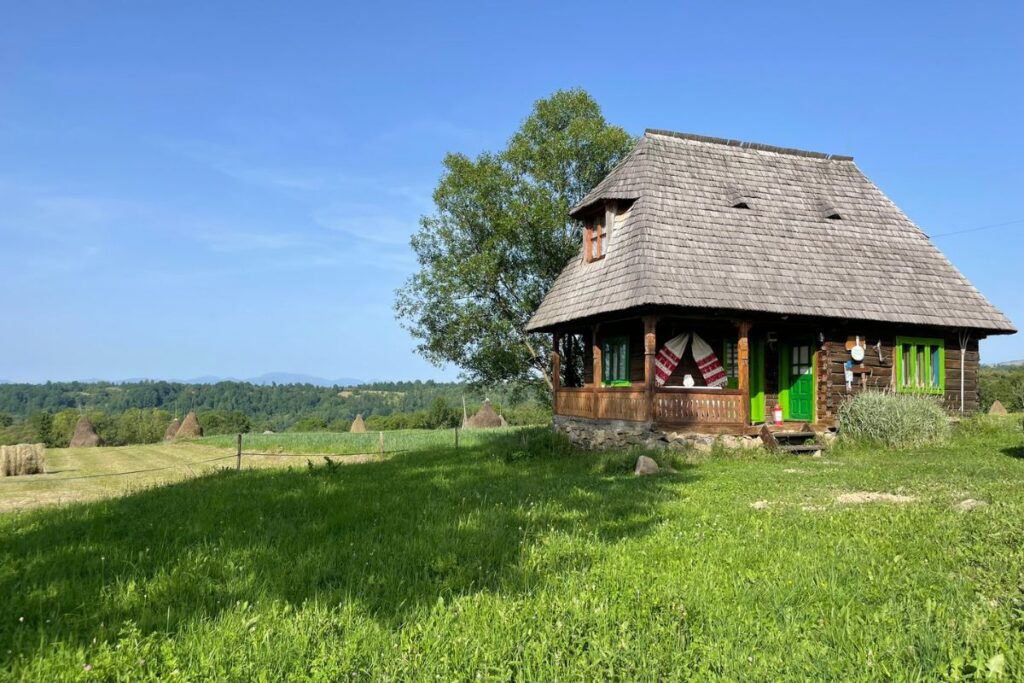
🏠 FAVORITE SPOTS: My favorite lodging has been in the Romanian countryside, especially in Bucovina and Maramureş, because you can rent traditional little huts that send you back in time. The best ones are those that kept the syle but remodeled the bathrooms, so you get good pipes and no weird smells.
Just a heads up that when you rent in the city, don’t be scared when you get to your spot and the building looks horrific from the outside. This is the old Communist building look, but I promise the inside is usually remodeled and should look like what you’ve booked.
Romanian People & Culture
The older generation that grew up in the Communist Regime that ended in 1989 is quite a conservative-minded bunch. Not only that, Romania is about 80% Christian Orthodox, so you get a lot of the traditional values of the church sprinkled in as well.
People of my generation, the millennials and younger, are more open-minded, have grown up with social media and technology, take vacations outside of the country, and, most of the time, have experienced new cultures, speak English, and are pretty Westernized.
🩷 IN MY EXPERIENCE: The favorite pastime for Romanians is to sit for coffee and cigarettes and complain about politics, the economy, and traffic for hours. If not this, then the discussion happily moves to sports, what they’re cooking for the family on the weekend, and where their next Romanian vacation will be.
What To Eat & Drink in Romania
Romania is in the meat and potatoes section of Europe, but it blows me away with the variety and deliciousness of its cuisine. I think a lot of my favorite dishes are blends of traditional Romanian with Turkish influences.
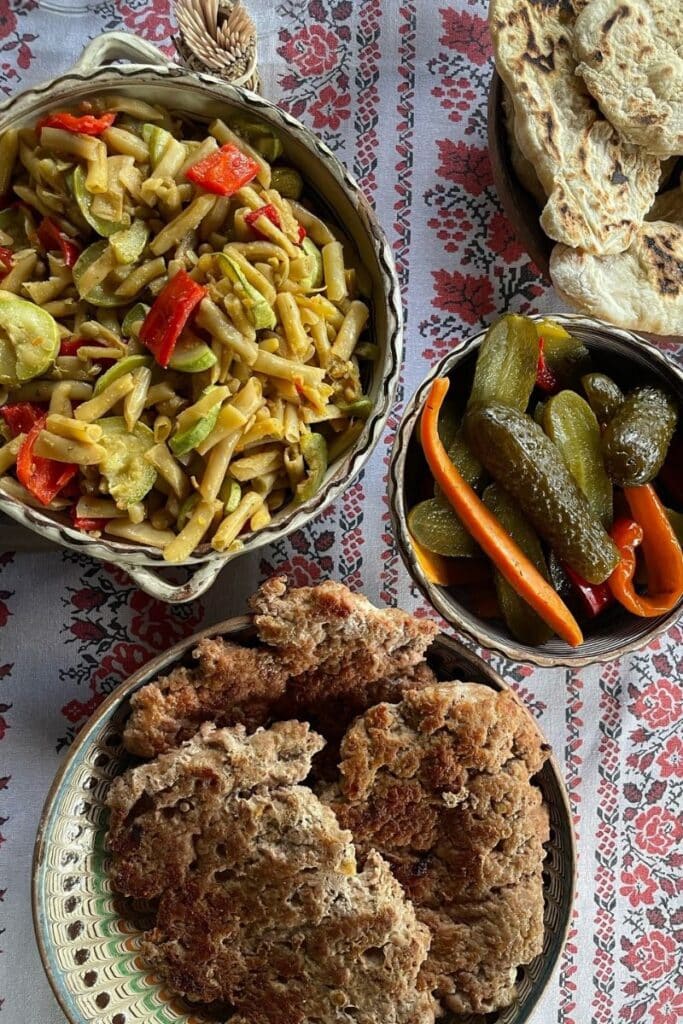
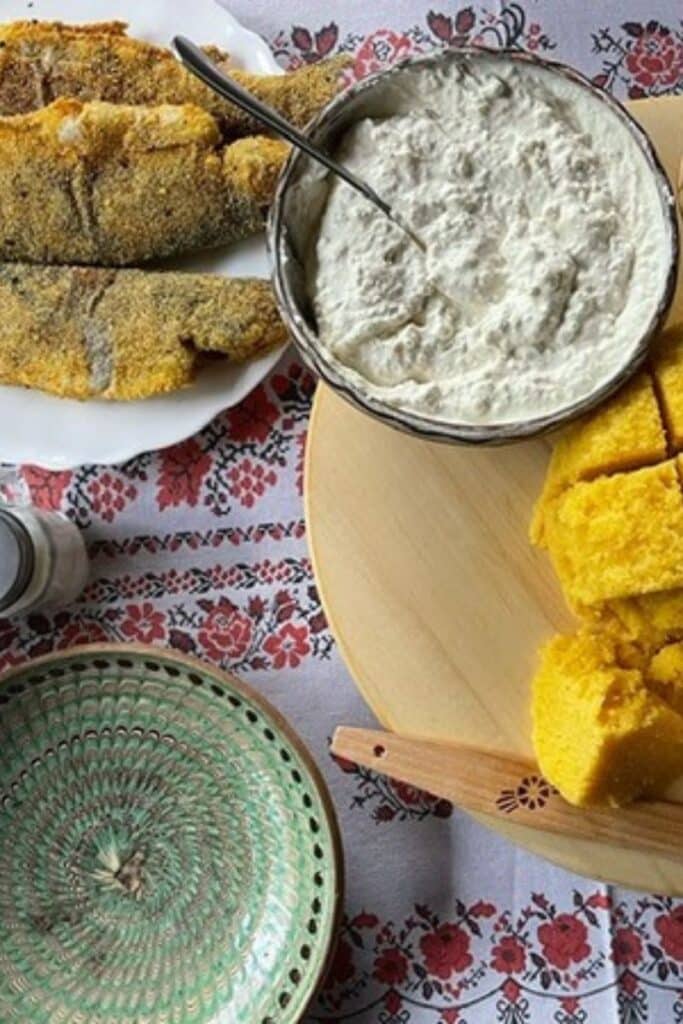
What To Eat in Romania
- Mici – Mici (pronounced ‘meechee’) are tiny sausages made of super finely minced pork or beef. They are grilled and best eaten hot and with mustard.
- Sarmale – these are cabbage rolls, filled with ground meat (usually pork). They are usually served for special occasions like Christmas or weddings, but you can find them on most traditional restaurant menus in Romania. I love them with a bit of sour cream on top!
- Soups – Romanians love soup so much, it’s practically served at every lunch. My favorites are ciorba de vacuta (beef soup) but I also recommend trying the ciorba de burta (tripe soup) – it’s my dad’s favorite. You will have to put vinegar in it to season it properly.
- Papanaşi – The donut Gods and the jam Gods have come together to make this beautiful dessert that is on almost every menu in Romania. It’s like giant donut holes with homemade berry jam and sweet, sour cream on top!
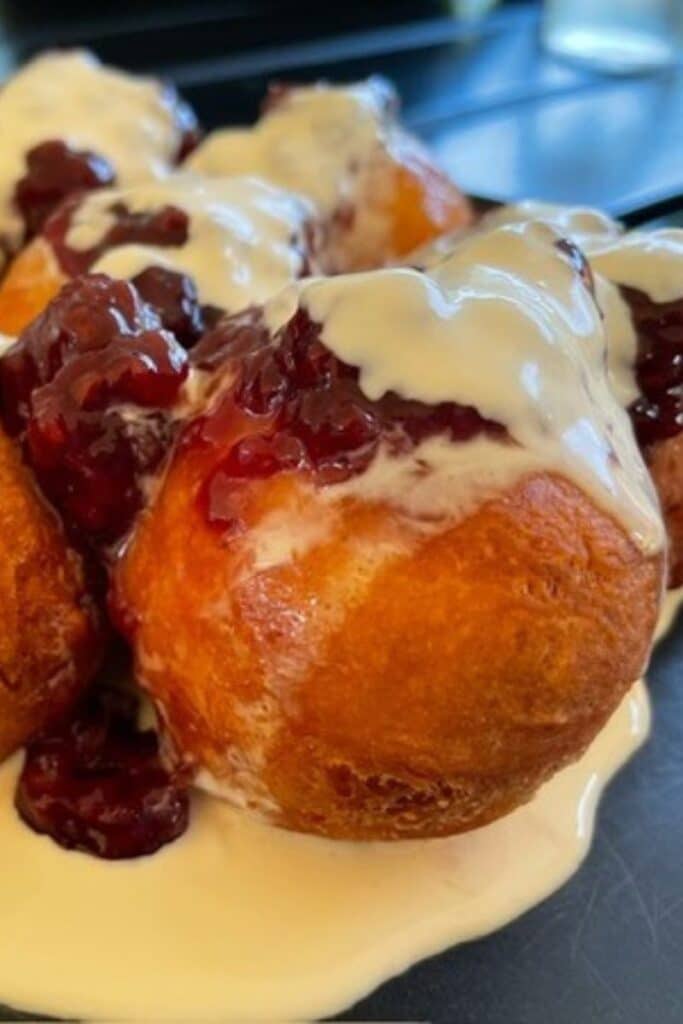
What to Drink in Romania
- Local Wine Types to Try: Murfatlar (red), Feteasca Neagra (red), Feteasca Regala (white), Tămâioasă (white)
- Local Beer to Try: Ursus & Ciuc are my faves (especially the dark or red ones)
- Local Liquor to Try: Țuicǎ (clear fire whiskey similar to Raki, usually drank by little old men once a day, and great pre and post-meal)
LOCAL TRADITIONAL RESTAURANTS: When you see a HAN or PENSIUNE restaurant on the side of the road, that’s going to be traditional food. Even better if there are tons of cars parked outside.
Best Hikes in Romania
Romania is home to the Carpathian Mountains (also known as the Transylvanian Alps), and so there are tons of peaks to explore.
🚨 GET A GUIDE! There are bears and wolves in the mountains of Romania, no joke, and some of the trails are not well-marked. I HIGHLY recommend going with a guide. Here is the one I recommend: Andrea & Lucian at +40 735 154 074. They own a trekking company and are excellent guides.
Over the years, I’ve hiked quite a few of these peaks in different regions of Romania, but my favorite national parks and trails are in these mountains:
- Piatra Craiului (my favorite ridge hike, but also super hard)
- Fagarasi Mountains (highest peaks in Romania being Moldoveanu and Negoiu)
- Bucegi Mountains
- Apuseni Mountains
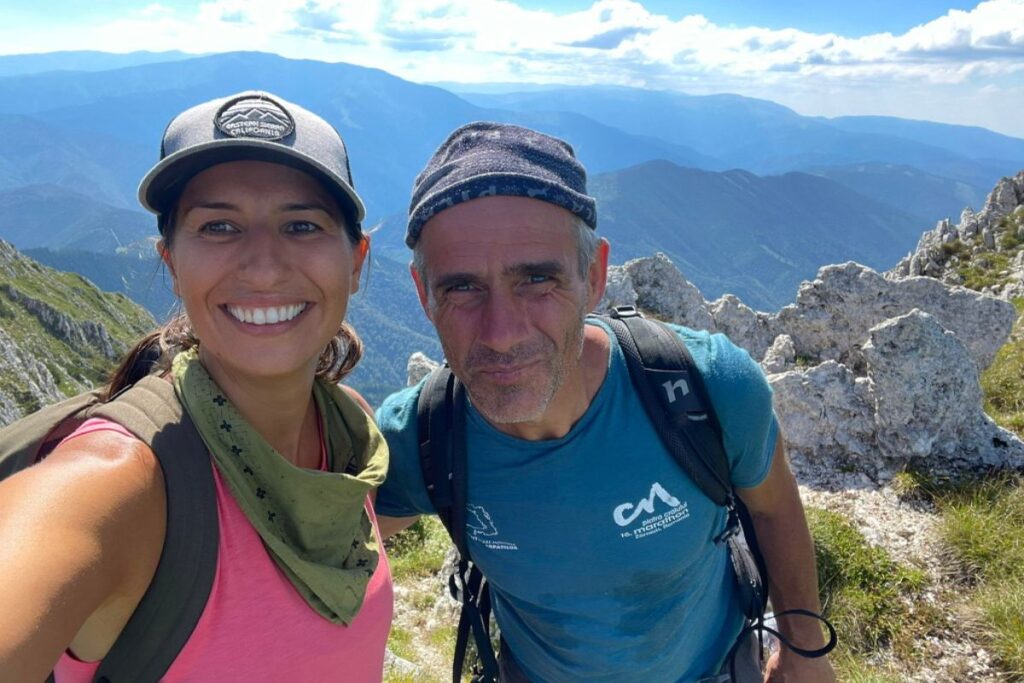
Best Things To Visit in Romania
Some of my favorite and best things to visit in Romania are:
✔️ City Breaks (about 3 days) in Bucharest, Brasov, Sibiu, and Cluj-Napoca in that order.
✔️ The castles of Romania – Peles Castle in Sinaia, Bran Castle near Brasov (Draculas Castle), and Corvin Castle.
✔️ The Transfagarasani Road and Bâlea Lake – where you can hike to Mt. Negoiu (Romania’s second tallest peak)
✔️ The regions of Bucovina and Maramureş for the authentic village life that is so beautifully preserved through the people’s way of life, traditions, festivals, and food.
✔️ The Black Sea and stay in Mamaia – this will be pricey, and I think it’s best done if there’s an EDM beach festival happening!
❌ TOURIST TRAPS: There are a few tourist traps that I think are still worth visiting but over-hyped on Instagram. These include Bran Castle (still cute, just overdid it on the vampire thing), Turda Salt Mine, and the Decebalus Statue in the south near the Serbia border.
Conclusion: Yes, Romania Is Worth Visiting
My country is beautiful. Not only that, but the people, culture, and traditions around the holidays are unique and still authentic. Visiting Romania feels like going back in time – to Communist-era cities, castles of kings and fairy tale vampires, and small village life still preserved by its community like in the old days.
And while Romania may be beautiful, it’s also a bit tricky to navigate. It’s not yet set up for easy tourism like Western Europe, which has tours and easy routes to follow, and to add to the complexity, it’s a geographically HUGE country – so you have to plan.
If I can leave you with just a few last bits of advice:
✔️ Romania is super big, and most visitors underestimate its size. It always takes longer than you think to get from one point to another – the roads are not all great, you’ll have to cross mountains, giant planes, and rivers, and the distances are long. I recommend really thinking about what you want to see and looking at a map to plan a realistic route.
✔️ Don’t try to squeeze too much in too little time. Pick a region and spend a week bopping around. Do a 1-2 day city break in the nearest city, get out into the countryside and enjoy village life and authentic food, try the local liquor from the neighbors, go for a hike, and explore the mountains on the remaining days. There’s always room for more next time!
✔️ Decide the basics – what type of vacation do you want? hiking, villages, city breaks, castles? How many days do you have? What’s your budget? This will dictate where you go, where you stay, and how you plan your road trip!
If you have any questions, just send me an email at [email protected].
